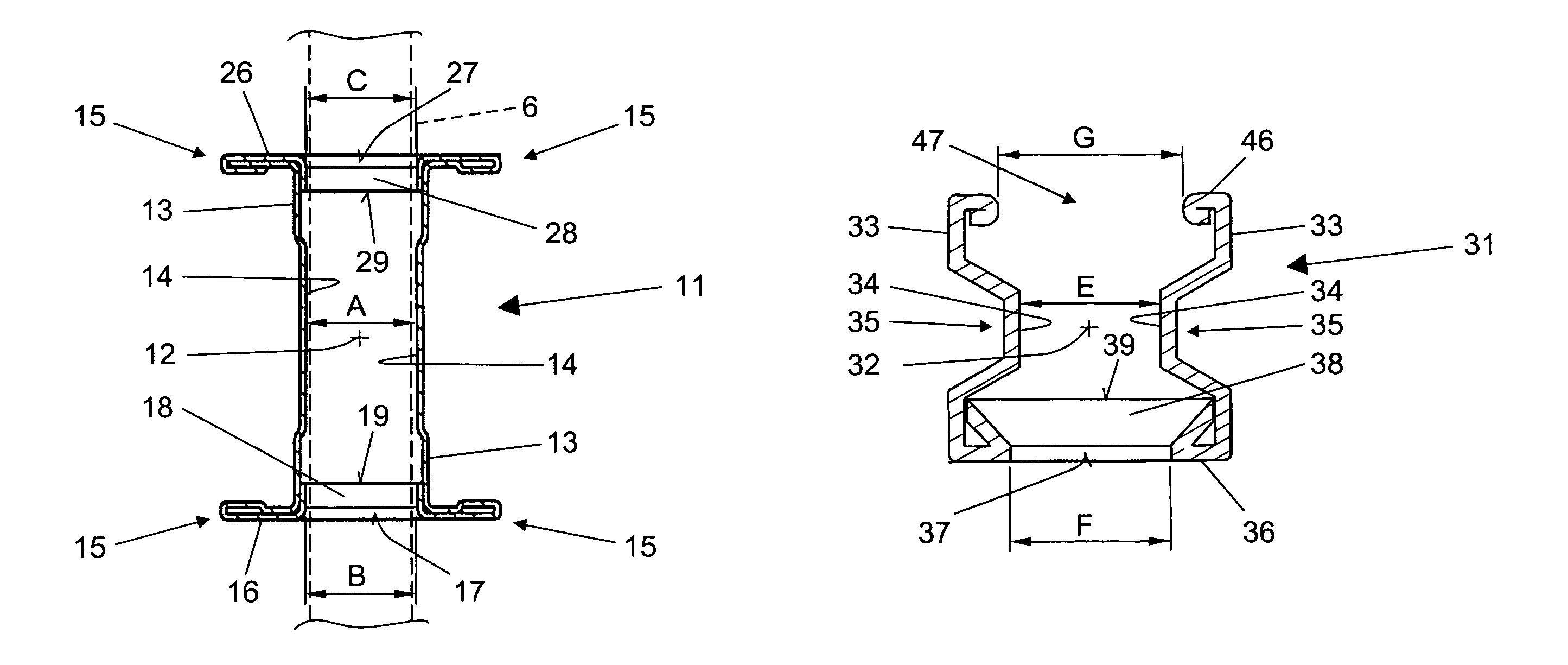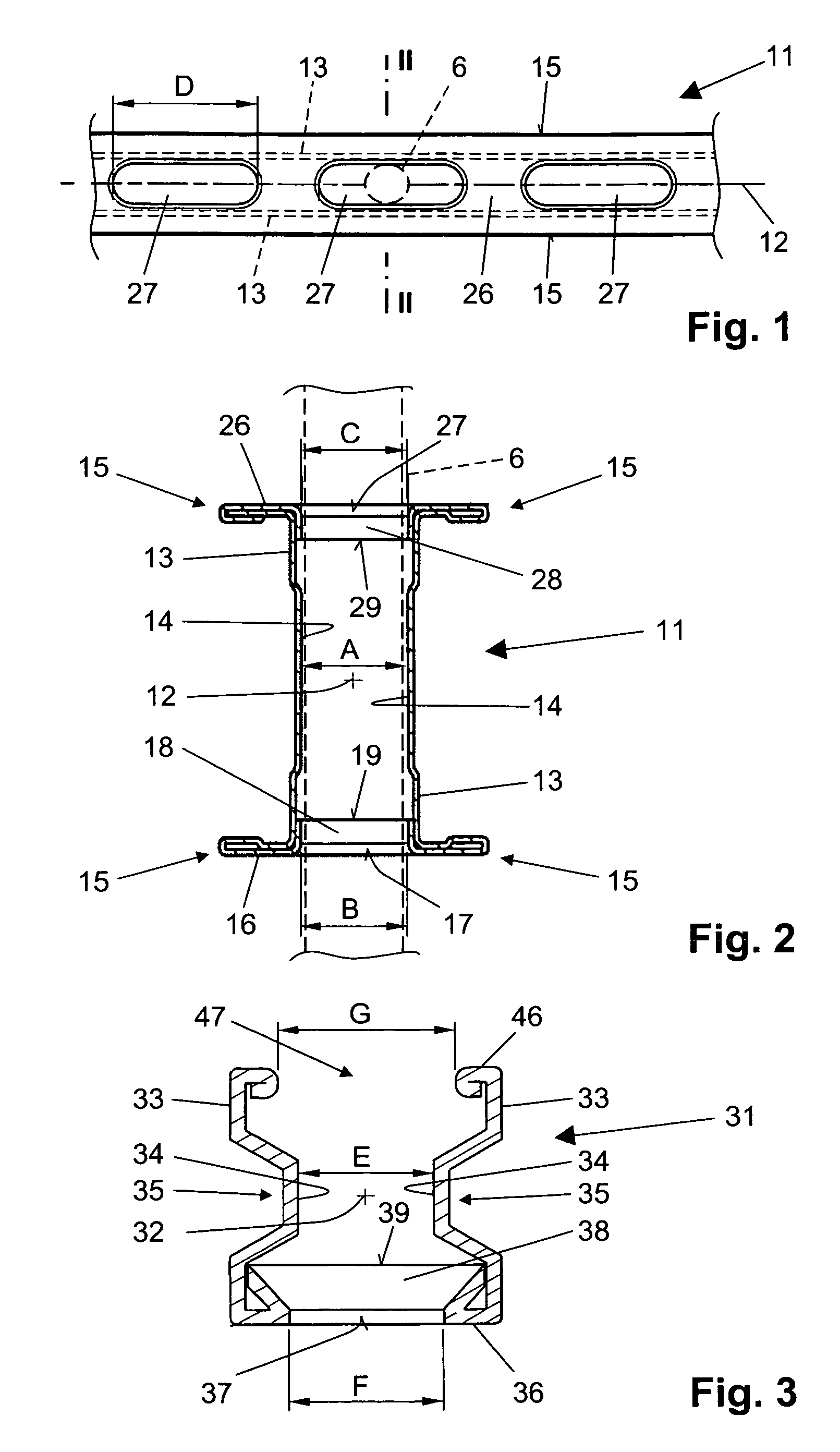Profiled rail
a profiled rail and rail technology, applied in the field of profiled rails, can solve the problems of substantial increase in mounting costs, additional costs in order, and tilting of the profiled rail, and achieve the effects of reducing static values, facilitating mounting of the profiled rail, and improving flexural and torsional strength
- Summary
- Abstract
- Description
- Claims
- Application Information
AI Technical Summary
Benefits of technology
Problems solved by technology
Method used
Image
Examples
Embodiment Construction
[0026]A profiled rail 11, which is shown in FIGS. 1-2, is formed of sheet metal and is designed for being suspended from a constructional component (not shown) with an attachment element 6. The profiled rail 11 has a longitudinal profile axis 12, two opposite side wall section 14, and two connection walls 16 and 26 connecting both side walls 13. The connection walls 16, 26 extend substantially perpendicular to planes in which the side walls 13 are located. Because of accumulation of material on edges 15 of the profiled rail 11, the profiled rail 11 even with reduced sheet metal thickness has an increased flexural and torsional strength in comparison with at least partially circumferentially closed profiled rail without accumulation of material on the edges.
[0027]In the first connection wall 16, there is provided a first through-opening 17 having an opening width B in a direction perpendicular to the longitudinal profile axis 12, and in the second connection wall 26, there is provide...
PUM
 Login to View More
Login to View More Abstract
Description
Claims
Application Information
 Login to View More
Login to View More - R&D
- Intellectual Property
- Life Sciences
- Materials
- Tech Scout
- Unparalleled Data Quality
- Higher Quality Content
- 60% Fewer Hallucinations
Browse by: Latest US Patents, China's latest patents, Technical Efficacy Thesaurus, Application Domain, Technology Topic, Popular Technical Reports.
© 2025 PatSnap. All rights reserved.Legal|Privacy policy|Modern Slavery Act Transparency Statement|Sitemap|About US| Contact US: help@patsnap.com


